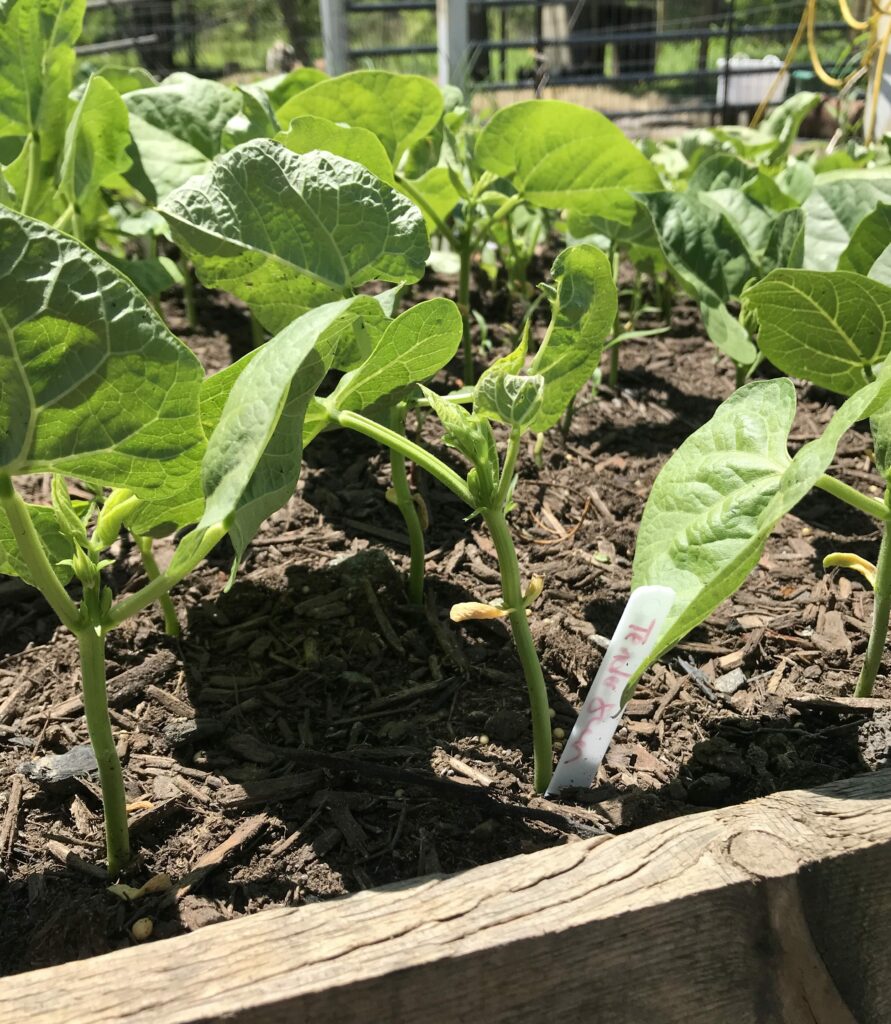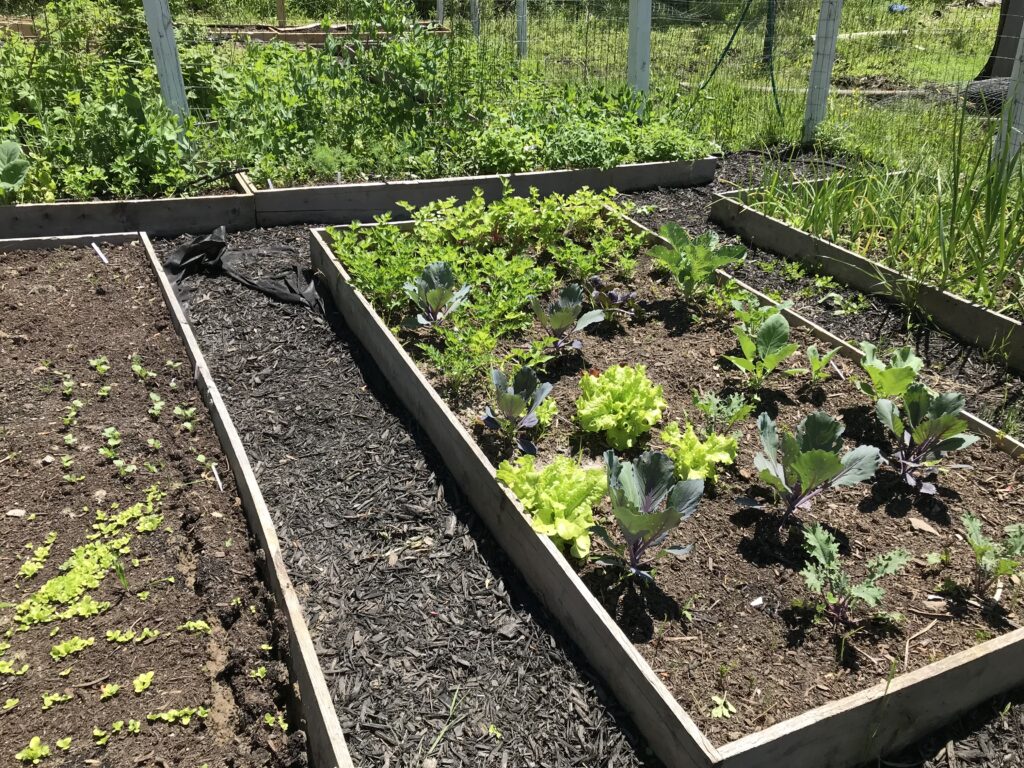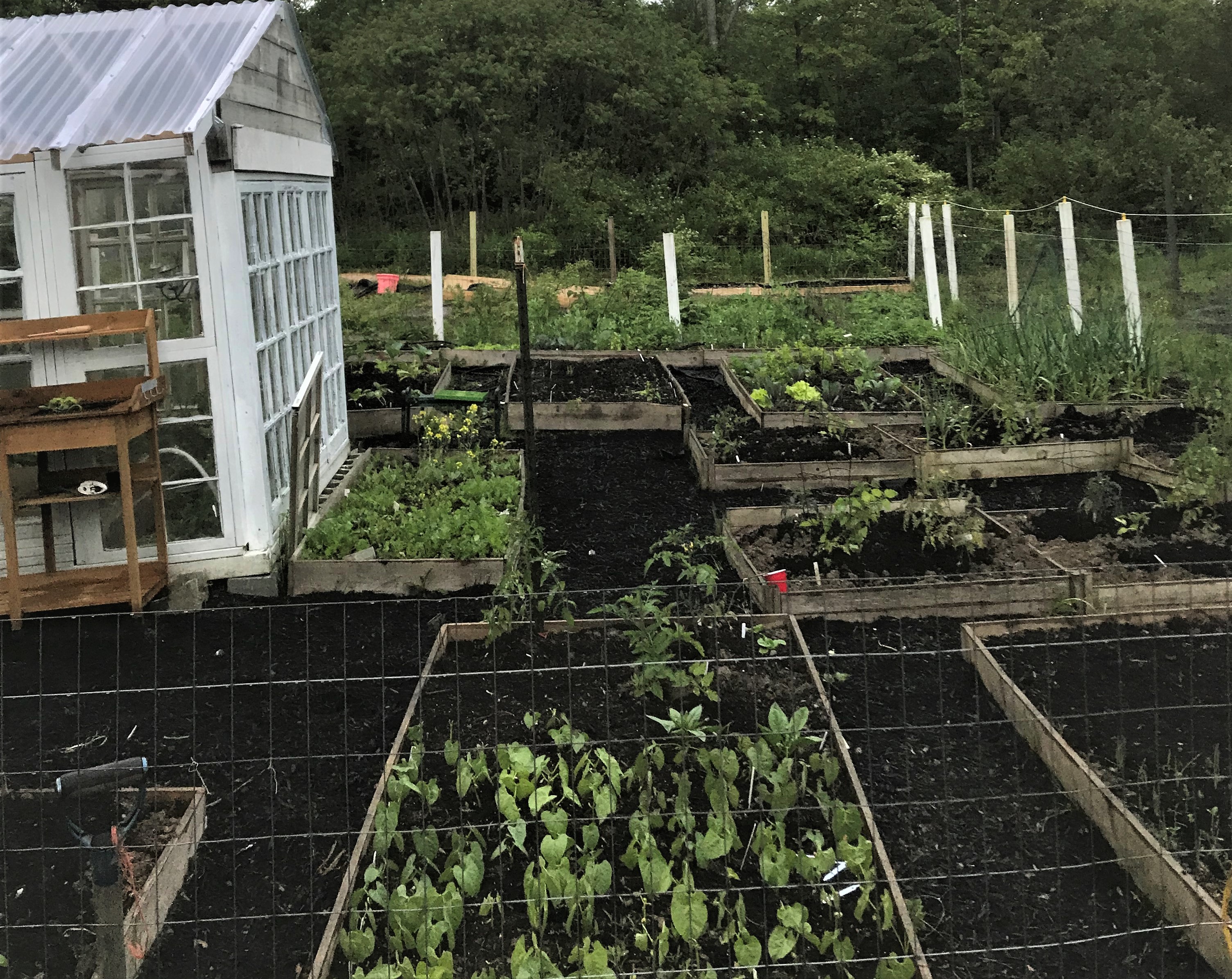There are a multitude of benefits of gardening and growing plants in raised garden beds, keep reading to learn about ten benefits of having raised beds in the garden and why we have raised beds.
Our first season on our homestead we put in a small and simple traditional garden. We borrowed a rototiller, picked what we thought was an ideal spot for the garden, and planted away. the area had full sun, was convenient and close to the house. I was excited to break ground and get started planting. I didn’t spend much time coming up with a gardening plan, but had a few modest goals or the season, which was to grow a small crop of tomatoes, a couple zucchini, some beans, cucumbers, and lettuce. I did a quick sketch of a garden layout, bought a couple packs of seeds and a few started plants.
On paper and in my head, it sounded and looked great!

Fast forward to several weeks later, we had just experienced our first torrential downpour and severe thunderstorm while living on our property. That little garden that we planted was all but wiped out, what I didn’t realize when I picked that spot is that the area is subject to minor flooding when we have heavy rain. I also was quickly learning that our soil was poor to drain and was heavy, thick clay. Upset, frustrated, and slightly dismayed I immediately started researching different gardening methods, along with ways to build our poor soil, and how to increase drainage. Gardening was an important part of my homesteading plan and I was determined to find a method that would work for us.
What I learned from my internet query was that all of the things that I was searching for and trying to achieve could be accomplished with raised garden beds.
For the past several years we’ve done most of our gardening in raised beds – for us, this method works very well. We average around 148 frost free growing days in our zone 5, upstate NY garden. A short growing season, coupled with that poor draining, thick, heavy clay soil, that is often waterlogged well into late May, means that growing directly in the ground is a bit challenging for us – especially when we want to get a jump on the season or when growing early season, cool weather crops.
If you have poor or little topsoil, water prone growing areas, or a short growing season, raised garden beds are likely a great option for you. In a small space you’re able to grow an amazing amount of food with relatively little ease.
Raised beds can be made with a variety of materials and can be built in any location that a traditional garden would go. You want to choose an area that gets adequate sunlight, aim for a space that gets a minimum of six to eight hours of sunlight a day. Wherever you decide to place you raised garden beds you’ll have lots of options when it comes to designs and what to build your beds out of. If you need help with building a raised bed, be sure to check out our post on: How to build a raised garden bed for less than 15 dollars.

Not only are raised garden beds visually appealing, they help create a neat and tidy garden space, they can also help you to grow your best crop ever.
With all of that in mind, let’s get started and chat about some of the benefits of gardening in raised beds.
Ten benefits of growing in raised beds:
- The soil warms up faster in the spring – Since the soil is above ground level the suns rays are able to warm the bed from all sides, this means that you’ll have the opportunity to get your seeds in the ground sooner and get a jump start on the growing season. You can also take advantage of the raised bed frame and build a cold frame or mini hoop house. This will help extend your growing season on the front and back half.
- Soil quality – one of the biggest benefits to raised beds is that YOU get to control the soil quality by choosing what you add to your bed. Since you can control the soil your raised beds can go anywhere – over existing soil, on rocks, gravel, or even pavement. Be able to reach into the bed to plant, weed, and harvest, means that you never need to step on the soil and that it won’t be compacted over time. Your soil will stay light and fluffy, this means that your vegetables will have an easier time growing.
- Better drainage – in areas that are prone to flooding, have poorly draining soil, or are in low-lying areas the elevated nature of the bed means that water will drain and your plants won’t sit and drown in waterlogged earth. Since your soil is less compacted and isn’t walked on this makes it drain better too. Your plants will be healthier and more productive.
- Tidy and weed free walkways – with raised beds it’s easy to have nice and tidy walkways. You can arrange the beds anyway that you like. Take advantage of the structure, add weed fabric and mulch the space, or use stepping stones. You’ll keep weeding to a minimum and you’ll have tidy paths that won’t get muddy.
- Less weeding – since you control the soil, bringing in soil and planting mediums that are free from grass and weed seeds gives you a leg up on the weed when you initially start gardening. Weeds that do grow are easy to pull. By intensively planting crops and using square foot gardening methods you can continue to keep weeds at bay by shading them out and giving them less physical space to grow.
- Less maintenance/easy upkeep – No strenuous work required to tend to your beds. Digging and prepping a traditional garden really can be strenuous work. A quick turn with a garden fork, adding new compost, and disposing of weeds and spent plants is often the extent of maintenance that’s required for raised beds.
- Accessibility – for people with disabilities and physical limitations, raised beds can be the answer that allows them to keep gardening. Since a raised bed is really only a large container that can be built to any height, size, and placed in almost any location. A bed built on raised legs and placed in a convenient location means that it’s easy to get to and no bending is required.
- Growing root vegetables – since the soil isn’t compacted, friable, free from rocks, and its better aerated, it makes it easier for roots to grow and spread, and also for root vegetables to grow strong, straight, and deep. If you’ve had trouble growing straight carrots, big beets, and hearty parsnips, take note that raised beds can make all of the difference!
- Easy to build and inexpensive – If you want to make raised beds feel free to be creative! They can be made out of almost any materials, items you have laying around, free/recycled materials, natural materials, or store-bought materials. You can even build beds by mounding soil. When it comes to raised beds, you have nearly endless options and you can make them as large or as small as you’d like. Want to learn how to build an inexpensive raised bed from wood? Check out our post on how to build a raised bed for less than $15.00.
- Visually appealing – I love the way that our raised bed garden looks! They are a work of art and my special place to unwind and relax. Creativity and the building process is a fun part of making and designing you own raised bed garden. You can put your mark on your garden with unique designs, symmetry, color, details, decorations, and materials. It’s a space that is all your own!
Now that you’ve seen some of the benefits of raised beds in your garden, let us know in the comments below if you’re planning on starting a garden with raised beds.
Until next time…
Ashley


Thanks for writing such a good article, I stumbled onto your blog and read a few post.